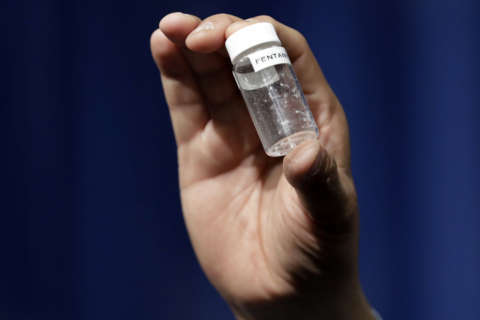WASHINGTON — Drugs laced with fentanyl are responsible for most opioid overdose deaths. But according to a new study, inexpensive testing tools can actually detect whether street drugs contain fentanyl.
And drug users are now interested in these convenient, cheap testing tools.
Researchers from the study by Johns Hopkins School of Public Health and Brown University found that finger-sized fentanyl test strips — similar to home pregnancy tests — can accurately evaluate minuscule samples.
“Eighty-eight percent were interested in the strips, and over 70 percent preferred the strips,” said Susan Sherman of the Johns Hopkins Bloomberg School of Public Health’s department of health behavior and society.
Three hundred and thirty-five drug users questioned for the study were from Baltimore, Boston and Providence, Rhode Island — three cities hit by high rates of fatal fentanyl overdoses.
Explaining the appeal of the test strips, Sherman said that someone doesn’t have to go to a fixed site for testing. They can take the strips home and use them privately by simply wiping residue on the inside of a drug baggie.
In December 2017, the D.C. Council voted to exempt the strips from drug paraphernalia laws.
Another fentanyl detector that the study’s researchers found to be effective would require drug users to visit a location where someone trained to read results would evaluate their stash.
The Bruker Alpha machine is the size of a cash register, returns results in 30 to 60 seconds, costs about $20,000 and can be programmed to reveal the presence of an array of pre-determined substances.
“You create a library, and you can create it based on a local drug market, which is really great, because there are different substances in different areas of the country and in different cities’ drugs that are on the street,” Sherman said.
Requiring people who are breaking the law to visit a fixed site may seem prohibitive, but Sherman said something similar worked when the tainted versions of the club drug ecstasy were a danger at raves.
“People who use drugs would sit at a table, [testers would] test people’s drugs, then give them harm-reduction information about drug use,” Sherman said.
Whether it’s the strips or the desktop machine, researchers believe they’re useful to help users make informed decisions, Sherman said — decisions that could save their lives.
“If people are not overdosing, [the testing methods] absolutely can save lives,” Sherman said.







